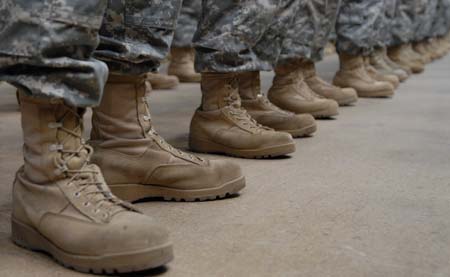Boots make the Man (or the Woman)
If you had any doubts about shoes changing ground reaction forces (GRF’s), then read no further.GRF’s are one of the factors considered by some sources as being injurious.
Tennis shoes had the most ground reaction forces
Army boots came in a narrow second
Bare feet had the least forces by a significant amount
Incidently, the amount of the valgus in the knees on landing was not significantly different among the 3 cases.
Hmmm. We need to think before recommending a shoe.
Ivo and Shawn. The Gait Guys. Sifting through the literature so you don’t have to. Yes, we are still bald, middle aged and good looking….
A kinematic and kinetic analysis of drop landings in military boots.
Abstract
OBJECTIVE:
The purpose of this study was to examine knee valgus in drop landings during three different footwear conditions and to examine the ground reaction forces exhibited during the drop landing in the three different footwear conditions.
METHODS:
Sixteen male and female Reserve Officer Training Corps (ROTC) university undergraduate cadets (21 +/- 3 yrs, 79 +/- 12 kg, and 172 +/- 10 cm) volunteered to participate in the study. Kinematic data were collected while participants performed drop landings in three conditions: bare feet, tennis shoes, and issued military boots.
RESULTS:
Significant differences among footwear for ground reaction forces (bare feet: 1646 +/- 359%, tennis shoe: 1880 +/- 379%, boot: 1833 +/- 438%; p < 0.05) were found, while there was no significant difference in knee valgus among footwear.
CONCLUSIONS:
Though footwear conditions did not affect knee valgus, they did affect ground reaction forces. Participants in this study had yet to receive any military training on how to land properly from a specified height. Further research should be completed to analyze the kinematics and kinetics of the lower extremity during different landing strategies implemented by trained military personnel in order to better understand injury mechanisms of drop landings in this population. It is likely that injury prevention landing techniques would be beneficial if these were employed by the military and not just in the sporting community.


















